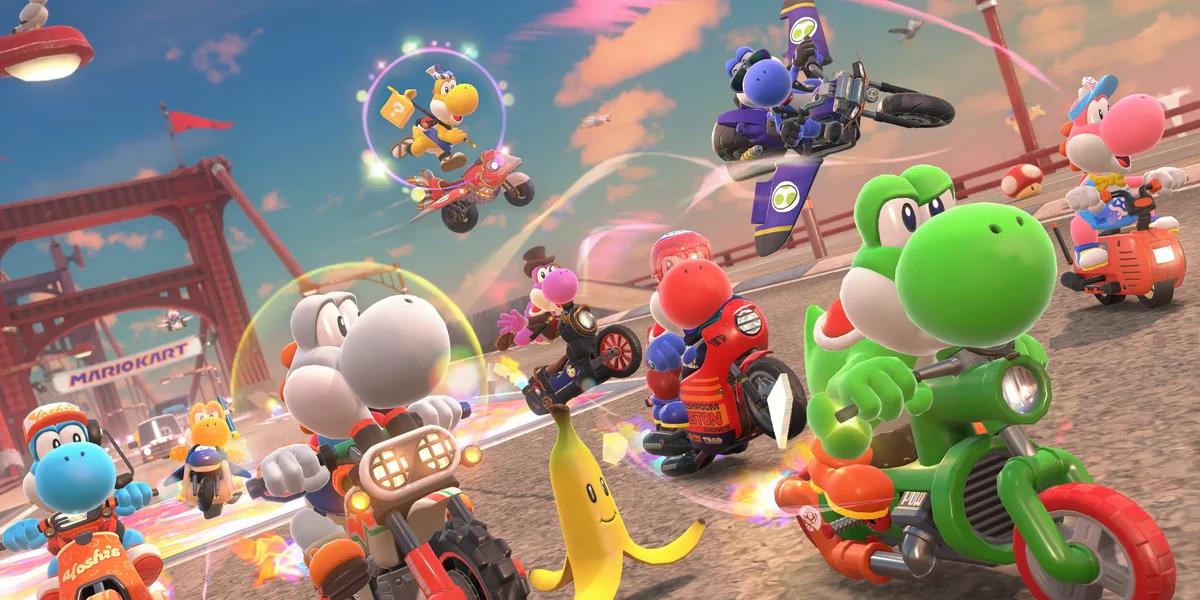The Nintendo Switch 2 has achieved a record-breaking launch, selling over 3.5 million units worldwide in its first four days, from June 5 to June 8, 2025. This makes it the fastest-selling console in Nintendo’s history, outperforming even the original Switch within a similar timeframe.
Record-Breaking Sales
Nintendo officially announced on June 10, 2025, that the Switch 2 had set a new company record for the fastest-selling console. The 3.5 million units sold within the first four days surpassed all previous Nintendo consoles. This figure includes all available Switch 2 configurations, such as the Mario Kart World bundle and region-locked consoles sold in Japan at a lower price.
By comparison, the original Nintendo Switch sold over 2.7 million units globally in its first month. The Switch has since become one of the best-selling video game consoles of all time, trailing only the Nintendo DS and Sony’s PlayStation 2.
Factors Driving Sales
Several factors contributed to the Switch 2’s impressive launch:
- Hardware Improvements: The Switch 2 boasts significant hardware improvements over its predecessor. It features a larger, more vivid screen capable of full 1080p high-definition display (and 4K when connected to a compatible TV or monitor), a faster processor for enhanced graphics and gameplay, and redesigned magnetic Joy-Con 2 controllers with mouse functionality.
- Launch Bundles: The inclusion of “Mario Kart World” as a launch bundle was a key sales driver. The game features a vast interconnected world where players can drive across cities, plains, deserts, and even the ocean. It also includes dynamic weather conditions, new game modes, and support for up to 24 drivers, the most in series history.
- Pre-Order Preparations: Nintendo made efforts to prevent excessive sales to resellers and scalpers, which had been a problem with previous hardware releases.
- Strong Demand: The launch followed weeks of chaotic pre-order windows, indicating high consumer anticipation. Despite increased stock compared to the original Switch launch, the Switch 2 sold out quickly in the US, Japan, and Europe.
- Innovative Features: The new GameChat feature allows players to voice or video chat and share their game screens with friends online. This feature is accessible with a simple press of the new C Button on the Joy-Con 2 controller. A free open-access period for GameChat is available until March 31, 2026, even without a Nintendo Switch Online membership.
Market Performance and Analysis
Analysts have noted the Switch 2’s strong early sales and its potential to galvanize the gaming sector. Hideki Yasuda, an analyst with Toyo Securities, stated that maintaining assembly capacity and increasing production will be key to sustaining momentum.
However, some analysts caution that maintaining this sales pace in the long run will be challenging. Nintendo forecasts sales of 15 million Switch 2 consoles in the current financial year, which is roughly equal to the original Switch’s sales in the same period after its release. The higher price of the Switch 2, at $449.99 in the United States compared to the original Switch’s launch price of $299.99, may also impact long-term sales.
Addressing Shortages and Scalping
Nintendo President Shuntaro Furukawa has apologized for customers being unable to purchase the console due to shortages. The company is working with its partners to speed up production and has secured agreements with Japanese online marketplaces to discourage resellers from taking advantage of the hardware’s scarcity.
The Legacy of the Original Switch
The original Nintendo Switch, launched in 2017, revolutionized the gaming market with its hybrid design, allowing play both at home and on the move. By the time the Switch 2 was announced in January 2025, over 146 million Switch units had been sold worldwide. The Switch became Nintendo’s best-selling home console and the third best-selling gaming console overall by 2023, following the PlayStation 2 and Nintendo DS.
Several factors contributed to the original Switch’s success:
- Hybrid Capabilities: The ability to function as both a home console and a portable handheld system appealed to a broad customer base.
- First-Party and Third-Party Support: The Switch received strong support from both first-party and third-party developers.
- Attractive Pricing: The Switch was substantially cheaper than its competition, making it an attractive option for many gamers.
- Timing: The COVID-19 pandemic led to increased demand for home entertainment, boosting Switch sales as people sought ways to stay connected and entertained indoors.
Potential Challenges and Future Outlook
Despite the successful launch, Nintendo faces several challenges:
- Maintaining Supply: Meeting the high demand for the Switch 2 will be crucial. Shortages could lead consumers to turn to other consoles, flattening sales momentum.
- Pricing: The higher price of the Switch 2 compared to its predecessor may deter some consumers.
- Trade Tariffs: Concerns about potential trade tariffs could disrupt supply and impact pricing.
- Sustaining Engagement: Nintendo needs to release new titles and attract casual gamers in emerging markets to sustain long-term sales.
A Promising Start
The Nintendo Switch 2 has made an unprecedented entrance into the gaming market, setting new sales records and reigniting excitement among gamers worldwide. Its innovative features, enhanced hardware, and strong launch titles have contributed to its initial success. Nintendo must address production challenges, manage pricing concerns, and continue delivering compelling content to maintain its momentum and achieve long-term success. The Switch 2 represents a significant milestone for Nintendo and could potentially reshape the gaming industry landscape.

